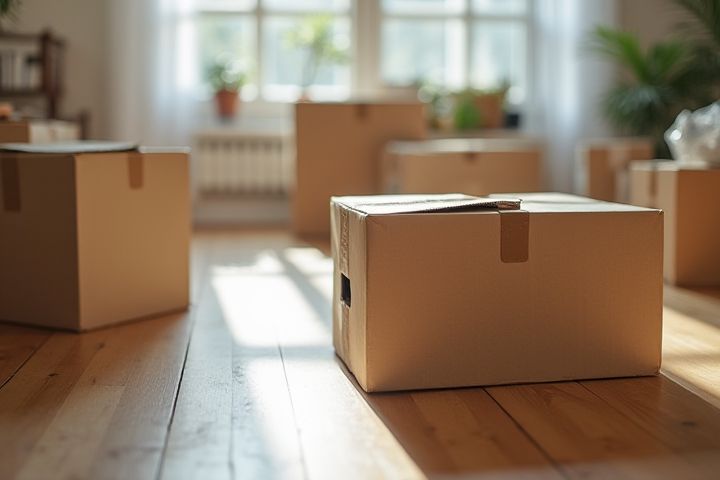
When moving house, it's essential to pack efficiently to ensure a smooth transition. Start with sturdy moving boxes, packing tape, and bubble wrap to protect fragile items like glassware or electronics. Label each box with its contents and the corresponding room to simplify unpacking at your new location. Don't forget essentials like toiletries, clothes, and important documents, which should be kept in an easily accessible bag or container. Lastly, consider including a first-night box with items like snacks and basic kitchen supplies to help you settle in comfortably on your first day.
What To Pack When Moving House
Essential documents
When moving house, prioritizing essential documents is crucial for a seamless transition. Gather personal identification papers, such as your driver's license, passport, and Social Security card, to ensure your identity is protected. Financial documents, including bank statements, tax returns from the past three years, and mortgage paperwork, should be kept easily accessible for any transactions or applications. Consider organizing everything in a dedicated folder or file box labeled "Important Documents" to streamline the moving process and avoid last-minute scrambles.
Packing supplies
When preparing for a house move, prioritize essential packing supplies like sturdy cardboard boxes, which typically come in various sizes (small, medium, and large) to accommodate different items. Invest in high-quality packing tape, ideally with a break strength of at least 60 pounds, to securely seal your boxes and prevent any accidental openings. Don't forget packing paper or bubble wrap, with 100 sheets usually sufficient for delicate items, ensuring they are well-protected during transit. Lastly, include markers or labels to efficiently identify the contents of each box, streamlining your unpacking process in your new home.
Basic cleaning items
When moving house, packing basic cleaning items is essential for maintaining a tidy environment in your new space. Consider including multi-surface cleaners, disinfectant wipes, and microfiber cloths to handle various surfaces efficiently. A vacuum cleaner will help remove dust and debris, while a mop and bucket will ensure your floors stay clean during and after the move. Don't forget to add trash bags for quick disposal of unwanted items and sponges for tackling stubborn stains as you settle into your new home.
Toiletries
When moving house, packing toiletries efficiently ensures easy access to essential items upon arrival. Include personal hygiene products such as toothbrushes, toothpaste, shampoo, conditioner, soap, and body wash in a designated toiletry bag. Don't forget skincare items like moisturizer, sunscreen, and any medications you may need, ensuring they're packed securely to prevent spills. Lastly, consider including a few rolls of toilet paper and a small towel to make your transition comfortable and hygienic.
First-aid kit
A well-stocked first-aid kit is essential when moving house, ensuring you are prepared for any minor accidents. Include items such as adhesive bandages, sterile gauze pads, antiseptic wipes, and tweezers to handle everyday injuries. Consider adding over-the-counter pain relievers like ibuprofen or acetaminophen, and keep a digital thermometer handy for quick health checks. Having a first-aid kit readily available not only ensures safety during the moving process but also provides peace of mind as you settle into your new home.
Toolkit
A well-rounded toolkit is essential for a smooth house move, ensuring you are prepared for assembly, disassembly, and minor repairs. Include a versatile cordless drill with a variety of drill bits to quickly secure or detach furniture and fixtures. Essential hand tools should feature a hammer, adjustable wrench, pliers, and a complete set of screwdrivers to handle different screw types and sizes. Don't forget packing tape, utility knives, and a stud finder, which will aid in proper wall mounting and help avoid costly mishaps during your relocation.
Change of clothes
When moving house, pack a change of clothes in a designated bag for easy access, ensuring you have essentials for a few days. Include comfortable items such as t-shirts, sweatpants, and pajamas to wear during the transition period. Don't forget to pack an extra pair of shoes suitable for both indoor and outdoor use, which can be helpful on moving day. Additionally, having a light jacket or sweater is wise, as temperatures can vary during the move, especially if the house is not fully climate-controlled.
Snacks and water
When moving house, it's essential to pack snacks and water for both energy and hydration throughout the process. Consider easy-to-eat options like granola bars, mixed nuts, and dried fruits, which provide quick fuel without requiring utensils. A portable cooler or insulated bag can keep bottled water and refreshing beverages chilled, ensuring you stay hydrated during your move. Aim to have at least one gallon of water per person for the day, along with a variety of snacks to maintain your stamina as you transition to your new home.
Personal electronics
When moving house, prioritize packing personal electronics carefully to ensure their safety. Begin with your computer, tablet, and smartphone, securing them in padded cases or their original boxes if available. Don't forget essential accessories like chargers, headphones, and external hard drives; organizing these in small bags can prevent tangling and damage. Labeling each box with its contents and the room it belongs to will streamline the unpacking process, ensuring you locate your devices quickly in your new home.
Important medications
When moving house, it's crucial to prioritize your important medications to ensure a smooth transition. Create a dedicated medication kit that includes at least a seven-day supply of prescription drugs, stock any over-the-counter pain relievers, and pack in original containers with labels intact for easy access. Don't forget to include first-aid essentials like band-aids, antiseptic wipes, and any critical allergy medications, as this aids in managing unexpected health issues during the move. Keeping this kit easily accessible, perhaps in a carry-on bag, can enhance your peace of mind amidst the chaos of relocating.
